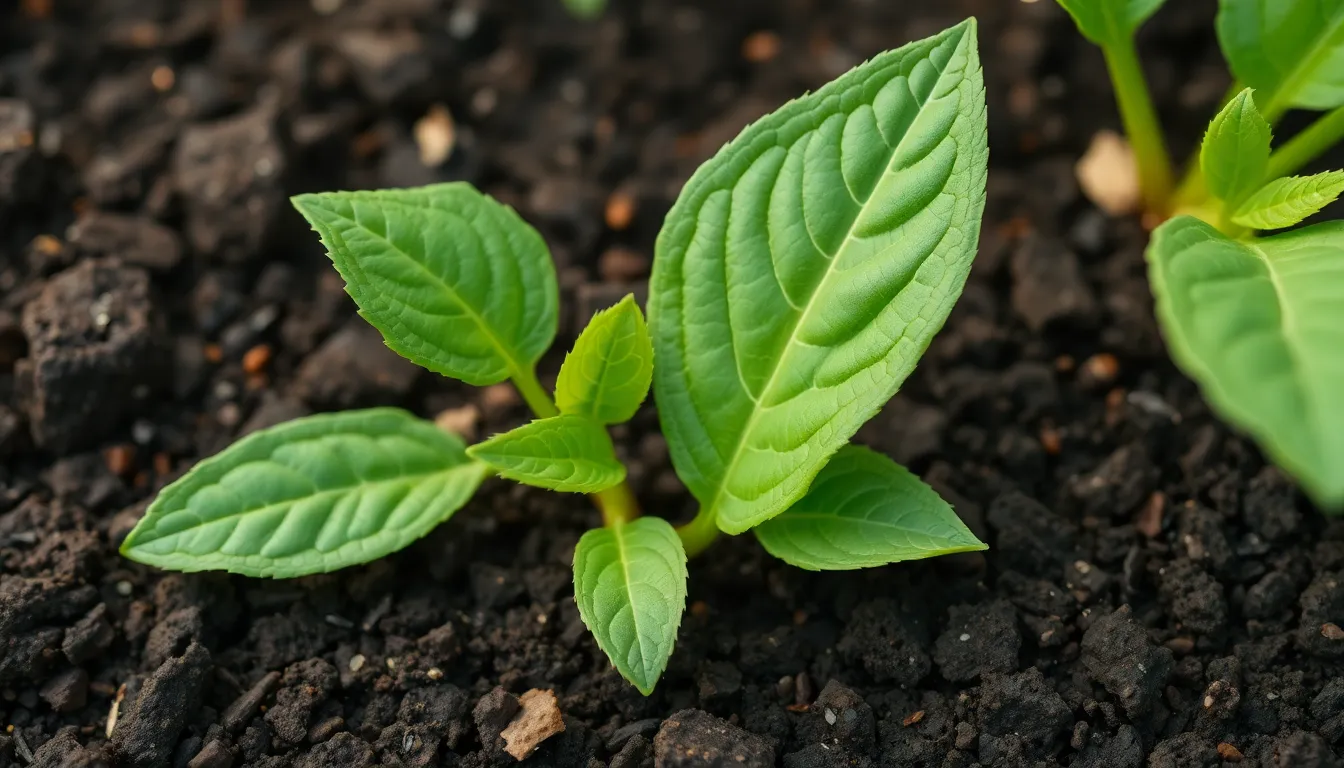Which Is a Limiting Nutrient for Plant Growth? Discover the Key to Thriving Plants

Plants are nature’s green superheroes, but even they have their kryptonite. When it comes to growth, one nutrient often plays the role of the villain, holding back our leafy friends from reaching their full potential. This nutrient might not wear a cape, but it’s crucial for photosynthesis, energy transfer, and overall health.
Which Is a Limiting Nutrient for Plant Growth?
Limiting nutrients play a crucial role in plant growth. They represent the nutrients that, when in short supply, restrict a plant’s ability to thrive.
Definition of Limiting Nutrients
Limiting nutrients refer to essential elements that limit plant growth when their availability diminishes. Common examples include nitrogen, phosphorus, and potassium. Each nutrient contributes to vital processes. Nitrogen aids in amino acid production, phosphorus supports root development, and potassium regulates photosynthesis. Deficiencies in any of these nutrients can stunt growth and reduce yield.
Importance in Plant Growth
Importance of limiting nutrients cannot be overstated. Nutrients directly influence plant health and productivity. Less nitrogen may lead to poor leaf growth, while insufficient phosphorus can hinder flower formation. Potassium deficiency affects overall plant vigor and stress tolerance. Understanding these vital relationships helps farmers and gardeners optimize nutrient management. Prioritizing balanced nutrient applications ensures robust plant development, higher crop yields, and healthier ecosystems.
Key Limiting Nutrients for Plants

Nitrogen, phosphorus, and potassium represent key limiting nutrients for plant growth. Each plays a critical role in various physiological processes essential for healthy development.
Nitrogen
Nitrogen promotes the production of amino acids, which serve as building blocks for proteins. This nutrient also influences chlorophyll formation, crucial for photosynthesis. Plants lacking nitrogen exhibit yellowing of leaves, a condition known as chlorosis. It’s vital for plants to receive adequate nitrogen, especially during their vegetative growth phase. Soil quality and types of fertilizers significantly impact nitrogen availability, affecting overall plant health and yield.
Phosphorus
Phosphorus supports root development, flowering, and fruiting, making it essential for reproductive growth. This nutrient also aids in the conversion of solar energy into chemical energy through ATP formation. Deficiencies often hinder root establishment, leading to stunted growth and poor crop yields. Ensuring optimal phosphorus levels in soil can enhance nutrient uptake and overall plant vigor. Rapidly available phosphorus in fertilizers can aid in immediate nutrient needs.
Potassium
Potassium regulates water uptake and enhances drought resistance in plants. This nutrient strengthens plant cellular structure, contributing to overall resilience against diseases. It plays a critical role in photosynthesis and protein synthesis, helping plants utilize other nutrients effectively. Insufficient potassium often leads to weak stems and poor fruit quality. Using potassium-rich fertilizers can help mitigate these issues, promoting robust growth and higher yields.
Factors Affecting Nutrient Limitation
Nutrient availability directly influences plant growth. Several critical factors affect how nutrients become limited.
Soil Type
Soil type significantly impacts nutrient retention and availability. Sandy soils drain quickly, often leading to nutrient leaching. Clay soils, while better at holding nutrients, may hinder root penetration. Loamy soils balance drainage and retention, providing ideal conditions for nutrient availability. To optimize nutrient management, understanding soil composition is essential.
Microbial Activity
Microbial activity plays a pivotal role in nutrient cycling within the soil. Microorganisms break down organic matter, releasing vital nutrients for plant uptake. High microbial diversity often indicates healthier soils, supporting enhanced nutrient availability. In contrast, reduced microbial activity can slow nutrient cycling, resulting in nutrient limitations. Maintaining healthy microbial ecosystems promotes more efficient nutrient use by plants.
Environmental Conditions
Environmental conditions also influence nutrient absorption. Temperature, moisture levels, and pH significantly affect nutrient solubility and uptake. Warm temperatures can enhance microbial activity and nutrient dissolving, while extreme conditions can inhibit these processes. Additionally, soils with extreme acidity or alkalinity can lead to nutrient deficiencies. Managing these factors fosters a well-balanced environment for optimal nutrient availability.
Identifying Nutrient Deficiencies
Identifying nutrient deficiencies in plants involves observing specific symptoms and conducting soil tests. Recognizing these indicators promotes effective nutrient management.
Symptoms in Plants
Yellowing leaves signal nitrogen deficiency, often starting with older foliage. Stunted growth suggests phosphorus scarcity, particularly affecting root development. Weak stems can indicate potassium shortages, leading to susceptibility to damage. Dark purple leaves may arise from phosphorus deficiency due to a lack of energy transfer within the plant. Additionally, leaf tip burn commonly results from inadequate potassium nutrition. Abnormal growth patterns also reveal potential nutrient issues. Noticing these symptoms helps in diagnosing deficiencies and implementing necessary interventions for plant health.
Soil Testing Methods
Soil testing provides precise data about nutrient levels and availability. Local agricultural extension services often offer soil testing kits that identify nutrient content effectively. Private laboratories also analyze soil samples for detailed nutrient profiles. Collecting samples from various soil depths and locations creates a comprehensive picture of soil health. Testing commonly examines key nutrients including nitrogen, phosphorus, and potassium. After testing, interpreting results is essential for determining appropriate amendments. Applying necessary fertilizers based on soil test outcomes ensures optimized nutrient management for improved plant growth.
Conclusion
Understanding limiting nutrients is vital for anyone involved in plant care or agriculture. Nitrogen phosphorus and potassium each play unique roles in promoting healthy growth and maximizing yields. Recognizing the signs of nutrient deficiencies allows for timely interventions which can significantly enhance plant health.

Soil type microbial activity and environmental conditions all contribute to nutrient availability and absorption. By managing these factors effectively growers can ensure their plants receive the essential nutrients needed for optimal development. This knowledge not only supports individual plant health but also contributes to sustainable agricultural practices and healthier ecosystems overall.



